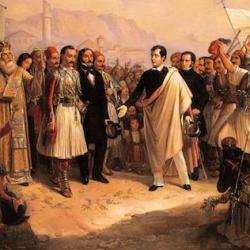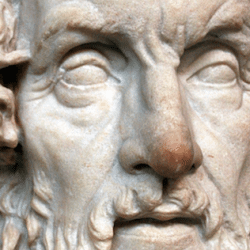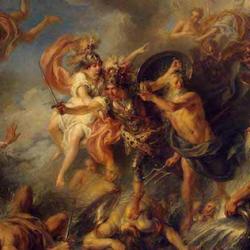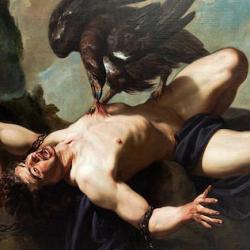In his autobiography, Wagner describes the effect of Aeschylus’ Oresteia on his sensibilities and work: “I could see the Oresteia with my mind’s eye, as though it were actually being performed; and its effect on me was indescribable. Nothing could equal the sublime emotion with which the Agamemnon inspired me; and to the last word of the Eumenides, I remained in an atmosphere so far removed from the present day that I have never since been really able to reconcile myself with modern literature. My ideas about the whole significance of drama and of the theatre were undoubtedly moulded by these impressions.”
Wagner’s is only one of a number of significant testimonies (Shelley and Napoleon are others) to the influence of the Oresteia in the modern world; Simon Goldhill (TLS, May 26) goes so far as to say that “the Oresteia was integral to the creation of what has a strong claim to be the most revolutionary artwork of the nineteenth century.”
Yet, the trilogy exerted this influence without being performed. The first full modern production of the cycle was produced in France in 1856, and the first English production didn’t happen for nearly three decades afterward. Agamemnon was sometimes performed separately, but often as a balley or opera rather than in its original form.
Goldhill offers this neat discussion of the “Carpet Scene” at the beginning of Agamemnon: “The queen controls the doorway and thus the house: it is only by giving in to her that the king can enter his home. As he enters the house as father and king, he is also losing his authority. The tapestries [which Clytemnestra convinces Agamemnon to walk over into the house] remind us of blood and of the destruction of precious things. Katie Mitchell’s production of Ted Hughes’s translation at the National Theatre, London, in 1999, brilliantly brought out the significance of this, by making those tapestries a patchwork of the little red dresses of the royal child Iphigeneia, who was sacrificed by Agamemnon to gain good winds for the Greek expedition to Troy: he tramples on fine things as he trampled on the altars of Troy. A whole history of transgression and revenge is embodied in the moment the king’s bare foot touches the tapestries.”











